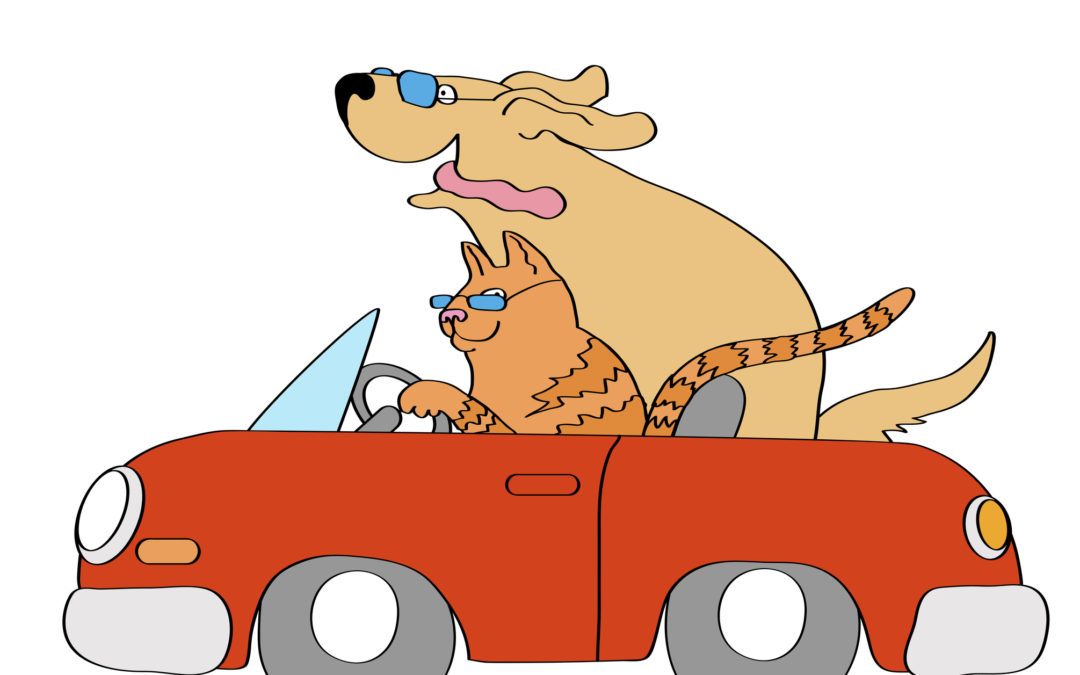Taking pets in the car is necessary sometimes, whether you’re going on a family vacation or taking them to the vet. Travel can be stressful for both you and your pet, but a little planning can go a long way in ensuring comfort and safety for everyone.
Have the appropriate space ready
When you take your pets in the car, ensuring they’re safely restrained is as much for your safety as it is for theirs. A crate or carrier with plenty of ventilation and a view of a window can help your pet avoid car sickness or getting too hot. A carrier also keeps your pet safer in the case of an accident.
For some animals, like dogs, you can find seat belt restraint systems designed to hold a carrier in place.
Especially on long drives, don’t let your pet stick his or her head out the window. This can be distracting for you or other drivers, and your pet could potentially be hit in the head.
Set a feeding schedule
Even if you’re taking your pet on a long drive, try not to feed him or her in the car. Plan breaks when it’s feeding time and give everybody a chance to stretch their legs and use the bathroom. Feed your pet a few hours before you leave rather than right before takeoff.
Pack a pet travel kit
Pets may not need to pack a bag of clothes, but they certainly need things with them on the road. Pack a bag for your pet with the following:
- Travel papers,
- An ID tag on your pet’s collar,
- Food and bowls,
- A leash,
- A waste scoop and plastic bags or a travel litter box,
- A favorite toy,
- Grooming supplies,
- A recent photo of your pet, and
- Any medication with a pet first aid kit.
If you’re traveling across state lines, you may need your pet’s rabies vaccination record, depending on the state.
Don’t leave your pet in a parked car alone
No matter what the weather is like, leaving your pet alone in a hot car can be scary and dangerous! Always make sure that your pet can stay with you as you travel.
Take a practice run
Planning is key here. When you’ve followed all the tips above, give your pet a chance to adjust to the car carrier at home, and then take a few shorter drives so your pet can adjust.

